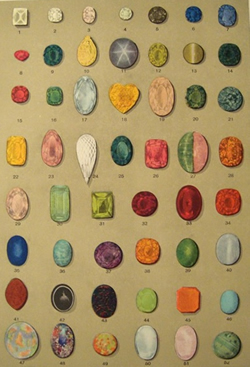Your Details
Your Details
|
Reviewed By Andreas Zabczyk
America's Jewelry Heist of the Century Jewels of Morgan-Tiffany Jewel Collection
In 1964, three young Americans from Miami, Florida, made the national headlines in what America called the 'jewel heist of the century'. The target was a jewel collection taken from the American Museum of Natural History in New York, founded by legendary banker and avid gemstone collector, John Pierpont (J.P.) Morgan. Morgan was actually the founder of the American Museum of Natural History as well as the Wadsworth Atheneum Museum of Art in his hometown of Hartford, Connecticut. In 1900, J.P. Morgan commissioned Tiffany's renowned gemologist, George Frederic Kunz to help put together the 2,176 piece J.P. Morgan-Tiffany jewel collection. The impressive collection consisted of many of the world's finest gemstone specimens. The following year, in 1901, the collection of jewels was donated to the American Museum of Natural History by J.P. Morgan. On October 29th of 1964, 24 jewels from that priceless collection were taken. At the time, the heisted jewels were valued at over $400,000, which would be equal to well over $3 million dollars today. Luckily, the trio who pulled off the 'jewel heist of the century' did not succeed in taking the entire collection, but the jewels they did take happened to include some of the finest in the set. Some of the most notable pieces taken during the heist included the Star of India, a near-flawless 563.35-carat grayish-blue star sapphire, mined from Sri Lanka. The Star of India is one of the largest blue star sapphires in the world and is not only admired for its astounding size, but also for its asterism which displays on both sides of its domed cabochon surface. Also taken from the museum was the Eagle Diamond, a 16.25 carat diamond discovered in Eagle, Wisconsin, and the 100.32 DeLong Star Ruby, a remarkable Burmese ruby first discovered in the 1930s. Fortunately, both the Star of India and the DeLong Star Ruby were recovered (along with a handful of other jewels taken that day) from a Miami bus depot locker. However, the Eagle Diamond was never found. Sadly, it is believed that the large, historically important Eagle Diamond was cut down into smaller pieces and later resold. The 16.25-Carat Eagle DiamondAll three of the jewel thieves were apprehended by police just two days after the heist. A local Florida surfer, Jack Rolland Murphy known as 'Murf the Surf' was the leader of the robbery. His two accomplices, Allan Dale Kuhn and Roger Frederick Clark were arrested with him. All three were sentenced to three years behind bars for their crime. Richard Duncan Pearson who played a role in hiding and ransoming the DeLong Star Ruby was also eventually caught and convicted. He served a 10 year sentence, a longer term than the three boys combined. So just how did three young beach boys make off with the 24 of the world's most valuable jewels? Well, as 'Murf the Surf' put it, they got lucky that the security at the museum was almost non-existent at the time of the planned heist. After casing the place out, the trio learned that the building's alarm system wasn't working properly and that the museum staff usually kept a window open on the second story for ventilation. To make things even easier for the jewel thieves, they later discovered during the robbery that the alarms on the display weren't operational. It was later reported that the museum security guards didn't make proper routine rounds that evening, so the display of jewels remained unwatched for hours, giving the boys plenty of time to get in and out without getting caught - at the scene of the crime that is. After their getaway, the boys traded some of the jewels with some Miami locals for a $30,000 loan. After checking in to a luxury Miami hotel, they began to spend their money lavishly, which raised suspicion. A hotel busboy tipped them off to the Miami Police after news of the jewelry heist hit the headlines and it wasn't long before the three of them were apprehended. If the boys had maintained a discreet presence and refrained from revealing their extravagant expenditures, it is highly likely that they could have successfully executed the 'jewelry heist of the century'. Out of the 24 stolen jewels, only 10 of the most valuable ones were eventually returned. As of 2024, the remaining 14 jewels taken that night have yet to be found and are still considered missing. |
